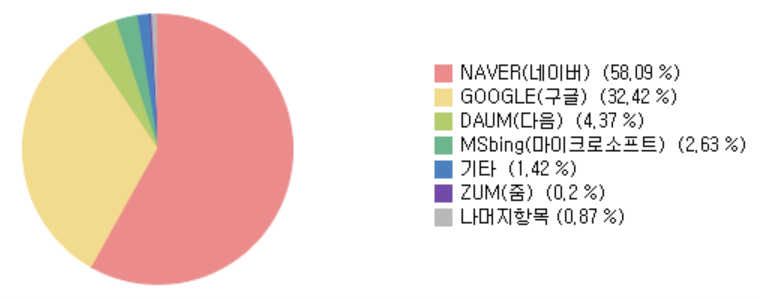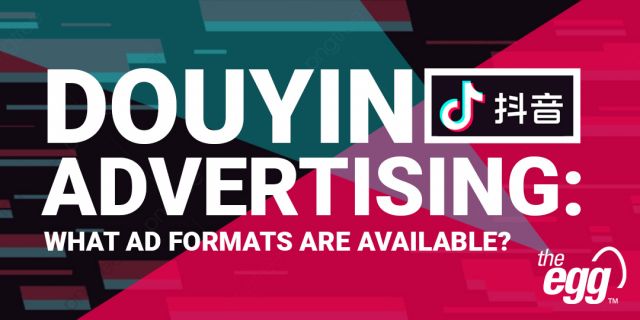Pros and Cons of SEM in Korea in 2024: Google Ads vs. Naver Ads

South Korea, a nation known for its advanced technology and high internet penetration, , with homegrown platforms such as Naver and Daum playing a major role in how consumers search for and engage with online content. This article serves as your guide to selecting the most suitable search engine for advertising in Korea, offering insights and tips for optimizing your ad performance. Whether you’re new to the market or looking to refine your strategy, understanding the nuances of Korean search engines can significantly enhance your advertising efforts.
As of recent data in 2024, the search engine market share in South Korea is predominantly led by Naver, with Google also holding a significant portion of the market. Naver accounts for approximately 58.09% of search queries as reported by Internet Trend, making it the most widely used search engine in South Korea. Google follows with around 32.42%, and Daum comes in third with about 4.37%.

These figures illustrate the strong preference for local search engines in South Korea, with Naver being the primary choice for many users due to its comprehensive integration of search services, content, and tools tailored specifically to Korean users. Google, however, remains a popular alternative, especially among those seeking broader global information.
If you’re looking to advertise your products or services in Korea, explore the detailed comparison of the leading search engines, Naver and Google, provided below. By tailoring your strategy to your specific industry, objectives, and target audience, you can ensure that your approach is as effective as possible and reaches the right people.
Naver
Pros
- Strong Domestic Market Presence: Naver is the leading search engine in South Korea, providing significant exposure within the domestic market. This is evident through the significantly greater search volume Naver presents compared to other search engine showcasing greater audience reach.
- Enhanced Exposure and Ecosystem Integration: By strategically employing various ad types across the diverse categories within Naver’s SERP, advertisers can amplify visibility. This seamless integration with Naver’s extensive ecosystem spanning news, blogs, cafes, and more empowers advertisers to leverage diverse content formats, thereby expanding their reach and maximizing impact.
- Guaranteed Ad Exposure: While Naver doesn’t offer impression share as a metric, ad exposure can be managed by placing higher bids to control ad rank among other bidders. The cost-per-click (CPC) needed to outbid competitors is also transparent and easily accessible.
- Expanding Advertising Reach: By incorporating Daum, the third-largest search engine in Korea, as a partner medium for Naver’s site search advertising, we extend the scope of our advertising reach, thereby ensuring heightened effectiveness across an expanded domain.
- Similar and Broad Match features in Beta: Currently the default setting in Naver Ads requires exact keyword matches. However, similar match and broad match features are available in Beta. Previously, advertisers needed to manually include all relevant keywords. Therefore, it was crucial to use localized terms that reflect the local language and customs to enhance targeting and ROI.
Cons
- Intense Bidding Competition: Due to the high number of competitors relative to the limited ad space, keyword bidding on Naver is highly competitive, often resulting in higher cost-per-click (CPC) compared to Google.
- Market Restriction: Naver’s primary focus lies within the Korean market, restricting its presence in international markets.
- Prepayment Requirement: Unlike Google Ads, Naver Ads require prepayment which can complicate budget management for some advertisers.
- Limited Conversion Tracking: Naver’s conversion tracking is less advanced, focusing primarily on page loads, which may not capture all conversion events efficiently.
Pros
- Precise Targeting Options: In Google Search Ads, several advanced targeting options are available, including:
- In-market audiences, which allow advertisers to reach users actively researching or comparing products and services;
- Affinity Audiences, which target users based on their interests and habits;
- Customer Match, which uses your data to target specific users across Google properties;
- Similar Audiences, which find new users with similar characteristics to your existing customers; and
- Dynamic Remarketing, which shows personalized ads to users who have previously visited your website or used your app. These targeting options are currently not available on Naver.
- Various goal-setting options: Customers can tailor their strategies and allocate ad budgets efficiently by setting up precise conversion goals, which encompass options such as website phone calls, online purchases, form submissions, sign-ups, cart additions, page visits, and custom event tracking.
- Optimized Expansion of New Keywords: Google Search Ads allow advertisers to obtain valuable insights through search terms through multiple match types. This helps improve ad performance and explore new market opportunities.
- High Global Market Share: As of 2024, Google holds a 90% share of the global search engine market, making it essential for businesses aiming to expand their global presence. Additionally, when users find insufficient information through English searches on Naver, they often turn to Google, demonstrating a complementary relationship between the two platforms. Google also provides access to YouTube, and data suggests that YouTube’s ad reach in early 2024 was equivalent to 85.6 percent of the Republic of Korea’s total population at the start of the year.
Cons
- Limited Search Relevance: Because Google was not specifically developed for Korea, it may not cater as effectively to the Korean demographic and their specific needs. As a result, Google’s search results may be less relevant compared to Naver, which has a search algorithm finely tuned to the Korean language.
- Not fully localized to Korean language: While Google’s keyword planner is a powerful tool, it may not be perfectly localized for all languages and regions, resulting in irrelevant keyword suggestions for Korean users. Additionally, it may not effectively capture the nuances or regional specifics of the Korean language.
- Non-Guaranteed Ad Display: Setting up an ad does not guarantee its display. Google’s ad placement depends on various factors such as bid competition, target audience, location, and time of day. To ensure the relevance and quality of ads, they are shown only when they meet Google’s optimization criteria, which means ad slots cannot be fixed or guaranteed.
- Non-Dominance of Ad Position by CPC: The ad ranking is not solely determined by the cost-per-click (CPC). Instead, it is influenced by a combination of factors, including the overall ad quality score, relevance, and the expected impact of ad formats and extensions. This means that even with a higher CPC, an ad might not secure the top position if it does not meet the other optimization criteria set by Google.
Ready to maximize your digital marketing in Korea?
Wrap up
The following features vary in relative advantage depending on industry, objective, targeting and region.
|
Features |
Google Search Ads | Naver Search Ads |
|
Target Market |
Global | Primarily Korea |
|
Cost Per Click (CPC) |
Varies depending on competition. Competitive keywords may have high costs | Generally higher CPC compared to Google, varies depending on advertiser bids |
| Ad Formats | Supports various formats: Search, Shopping etc. |
Primarily text-based ads: Also utilizes Naver Post, Blog content, etc. |
| Keyword | Exact / Phrase / Broad |
Exact (Default) / Phrase, Broad (Beta) |
|
Targeting Options |
Language, In-market audiences, Affinity audiences, Customer Match, Similar Audiences, Dynamic Remarketing | Interest Targeting, Gender/Age Targeting |
| Platform Features | Besides search engine, can utilize Display Network, YouTube, etc. |
Strong presence in Naver ecosystem: Web portal, Blogs, Cafe, etc. |
| ROI | High click-through and conversion rates, efficient ad spend utilization |
Achieving high ROI possible with proper targeting and content strategies |
Why Choose the Egg?
- Expertise in Localized Optimization: Benefit from The Egg’s expertise in optimizing campaigns for local markets, leveraging bilingual capabilities to ensure all ads are fully localized. This approach accounts for language nuances and cultural preferences, effectively resonating with diverse audiences and driving higher engagement and conversions.
- Diverse Industry Experience: Leverage The Egg’s extensive experience across various industries, including both B2B and B2C sectors, to develop tailored strategies that address unique market dynamics and client objectives.
- APAC Market Integration: Leverage The Egg’s ability to seamlessly operate across diverse markets in the APAC region, supported by proficient communication skills in English and local languages, to ensure cohesive campaign management and consistent performance across regions.
- Omni-Channel Integration: Consider integrating both Google Ads and Naver Ads to create a comprehensive SEM strategy tailored for the South Korean market, ensuring a seamless omni-channel experience.
- Leverage AI and Automation: Utilize AI-driven tools and automation, particularly leveraging our proprietary tool, Upstory, to streamline campaign management processes and enhance targeting precision. Combining the power of AI and the creativity of humans, Upstory brings efficiency to digital marketing workflows with features such as AI Digital Assistants, Preloaded Prompts, and Data Connections. With Upstory, we ensure that sensitive customer information remains confidential and protected, without being exposed to external sources.
- Advanced Data Analytics: Utilize tools such as Google Analytics and third-party analytics platforms to gain deeper insights into campaign performance and audience behavior.
- Ad Testing and Optimization: Continuously test and refine ad creatives, campaign strategies, and budget allocations across both platforms to maximize performance and ROI.





